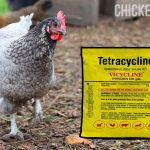Chicken Egg Abnormalities: Are Weird Eggs Safe To Eat?
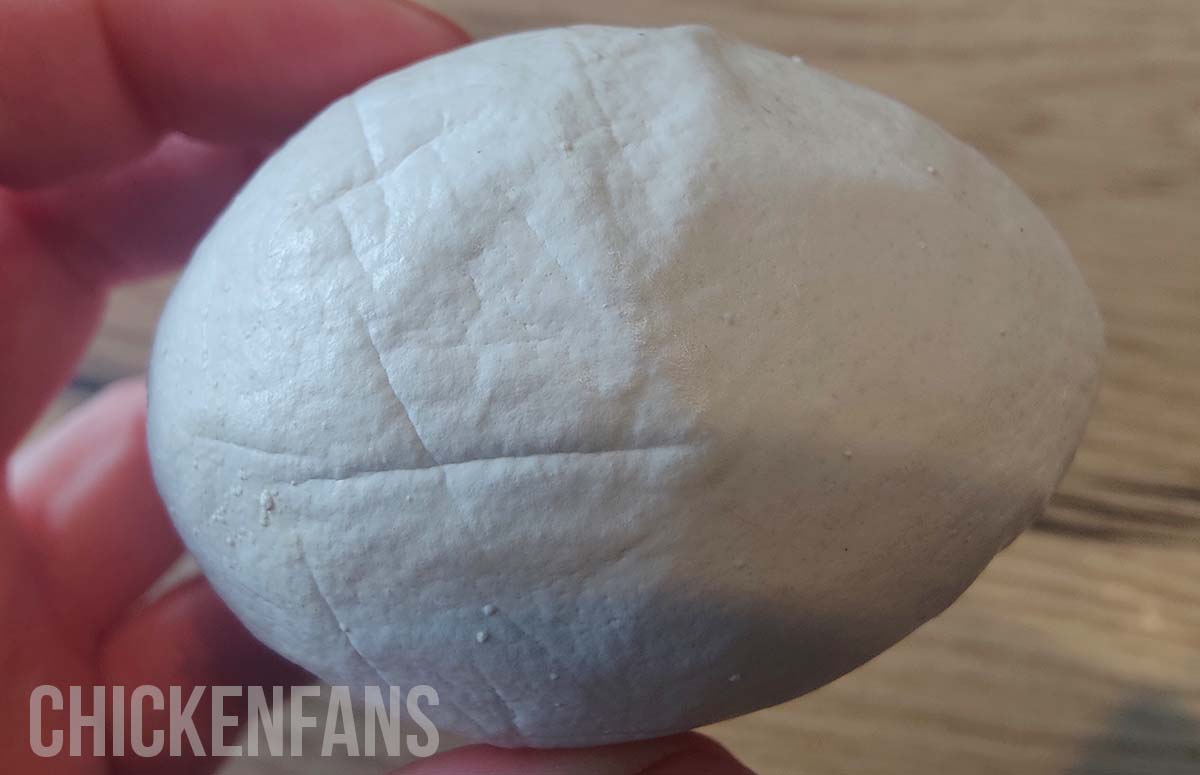
It’s hard not to find an egg abnormality or two in chicken egg production. No matter how small or large your flock is, you can never avoid getting an egg that’s far from the norm.
Thankfully, these chicken egg abnormalities don’t just appear out of sheer coincidence. Let’s discover all the different chicken egg abnormalities and see whether these eggs are still edible or not.
- Shell-less eggs
- Soft-shelled eggs
- Wrinkled eggs
- Calcium deposits on eggs
- Speckled eggs
- Slab-sided eggs
- Cracked eggs
- Corrugated eggs
- Mottled eggs
- Dirty eggs
- Bloodstained eggs
Shell-Less Eggs
As the name implies, a shell-less egg has a yolk, an egg white, and an outer membrane, but it’s missing the shell. If you find one underneath one of the roosts, there’s no need to panic. A shell-less egg doesn’t immediately signify significant health problems for your hens.
Young hens commonly produce a shell-less egg or two during their first laying weeks. Sudden disturbances at night, like a predator prowling around, can also cause hens to produce shell-less eggs due to anxiety.
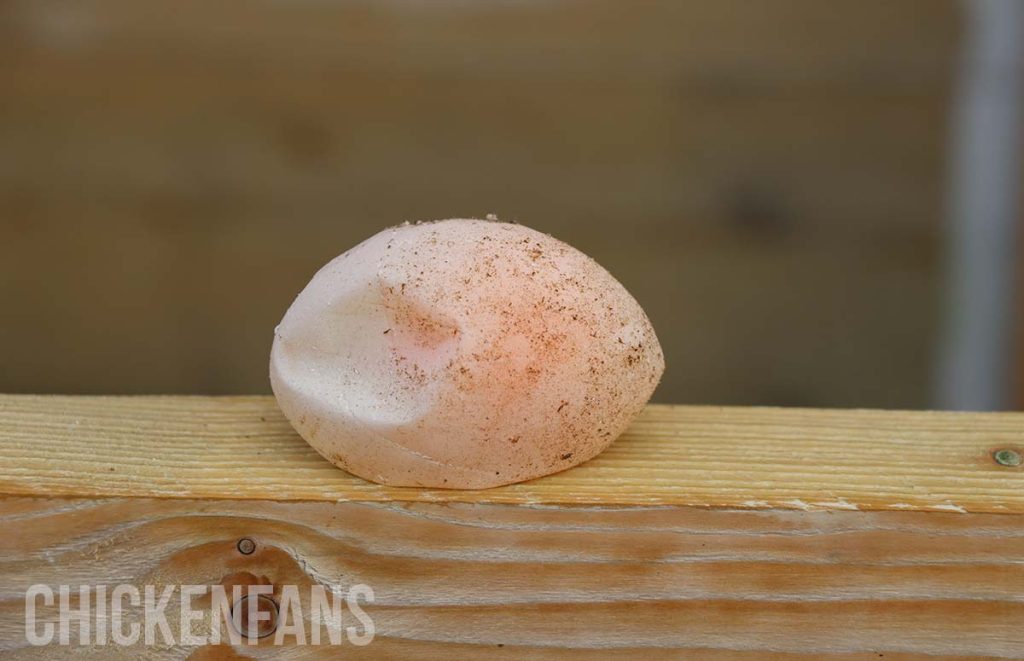
Shell-less eggs also indicate nutritional deficiencies in the hens’ diet. Adding more calcium, phosphorus, and vitamins can help resolve the issue.
If that doesn’t work, your hens are likely suffering from a disease. Newcastle disease, egg drop syndrome, infectious bronchitis, and avian influenza are common diseases that can cause shell-less eggs.
Can I Eat Shell-Less Eggs?
No, it’s not safe to eat a shell-less egg. The eggshell and the natural bloom coating protect against the infiltration of bacteria from the dirt, feces, and blood. Eating these eggs can result in food poisoning, Salmonella infections, nausea, vomiting, and diarrhea.
Soft-Shelled Eggs
Soft-shelled eggs are another common chicken egg abnormality, similar to shell-less eggs. Unlike shell-less eggs, though, soft-shelled eggs do have a shell. However, it may as well not have one due to its lack of rigidity.
The main culprit usually lies in the chicken’s diet. Too much potassium, not enough calcium, mycotoxins from moldy feed, and mineral imbalances within the drinking water are all probable causes as to why your hens are laying soft-shelled eggs.
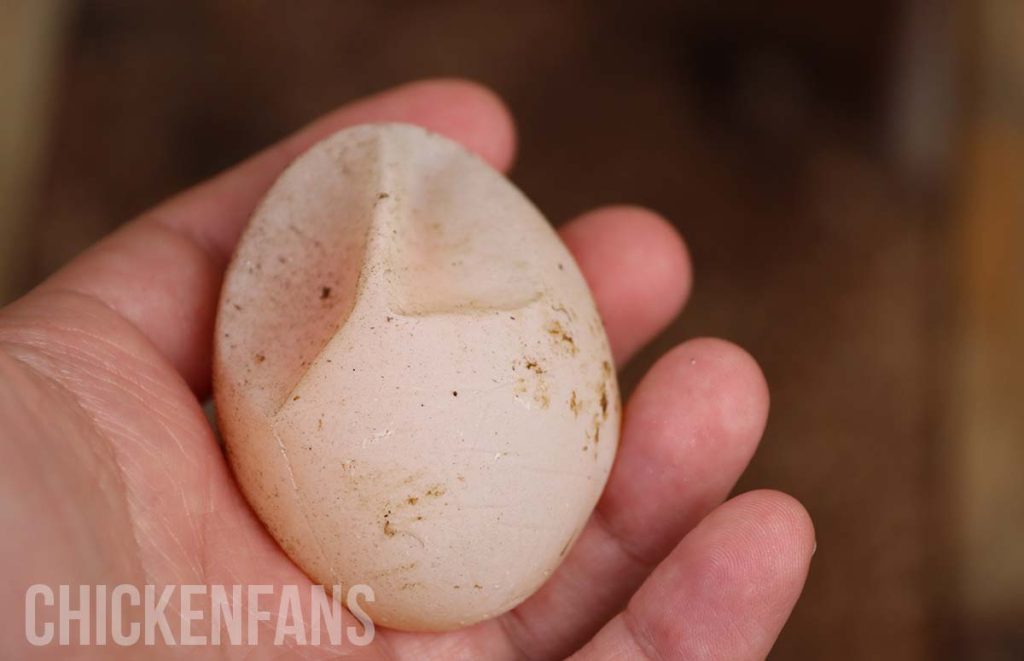
Other reasons not involving their diet include the hens’ age, heat stress, and a long laying cycle. Orpingtons and Wyandottes are chicken breeds that don’t tolerate excessive heat and can produce soft-shelled eggs when there’s not enough drinking water to help cool them down.
Can You Eat Soft-Shell Eggs?
Just like shell-less eggs, eating soft-shelled eggs is not a good idea. Foreign substances can pass through these eggs, as the soft shell provides little resistance.
Wrinkled Eggs
Deep ridges or wrinkles on the eggs could mean one of two things. First, it could mean your hens’ stress levels are above average. Overcrowding and constant threats from predators are the two major factors.
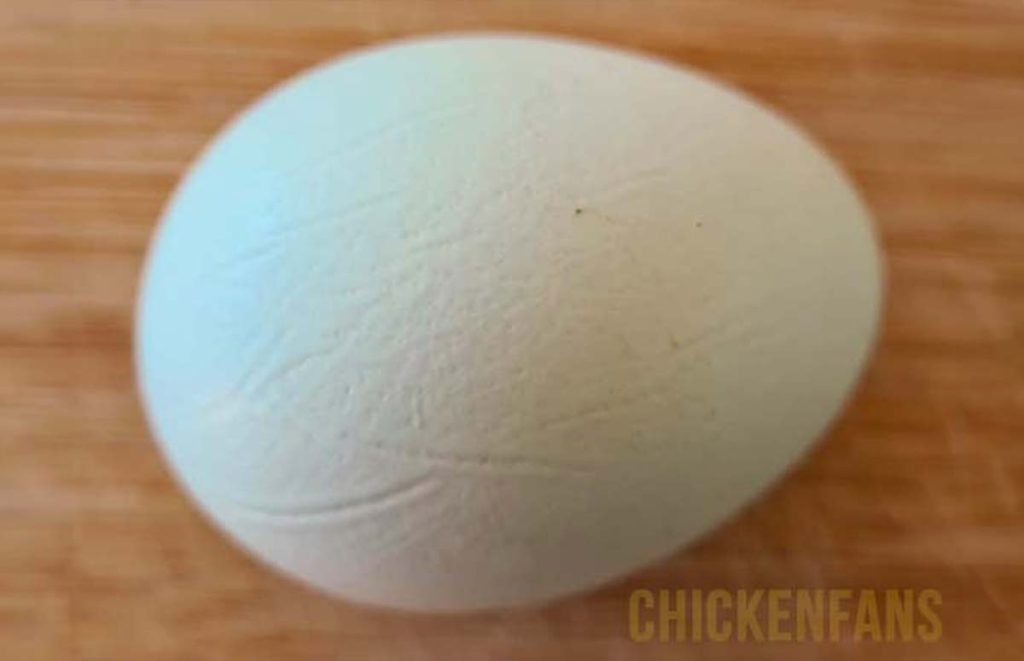
And second, your hens are suffering from a significant health problem. The hen’s shell gland is faulty or she suffers from infectious bronchitis. Young hens that produce wrinkled eggs are more likely to suffer from the latter.
However, wrinkled eggs don’t always mean something wrong with your hens. Older hens tend to produce wrinkled eggs due to a thinning of the egg’s albumen, or what many refer to as the whites.
Can I Eat Wrinkled Eggs?
Luckily, wrinkled eggs are safe to consume. Just make sure to avoid those with a cracked surface.
Calcium Deposits On Eggs
If you suddenly find irregularly shaped masses on the surface of the eggs, then you’re dealing with calcium deposits on eggs. Some also refer to them as pimples when the calcium deposits are smaller and more numerous on the surface of the eggs.
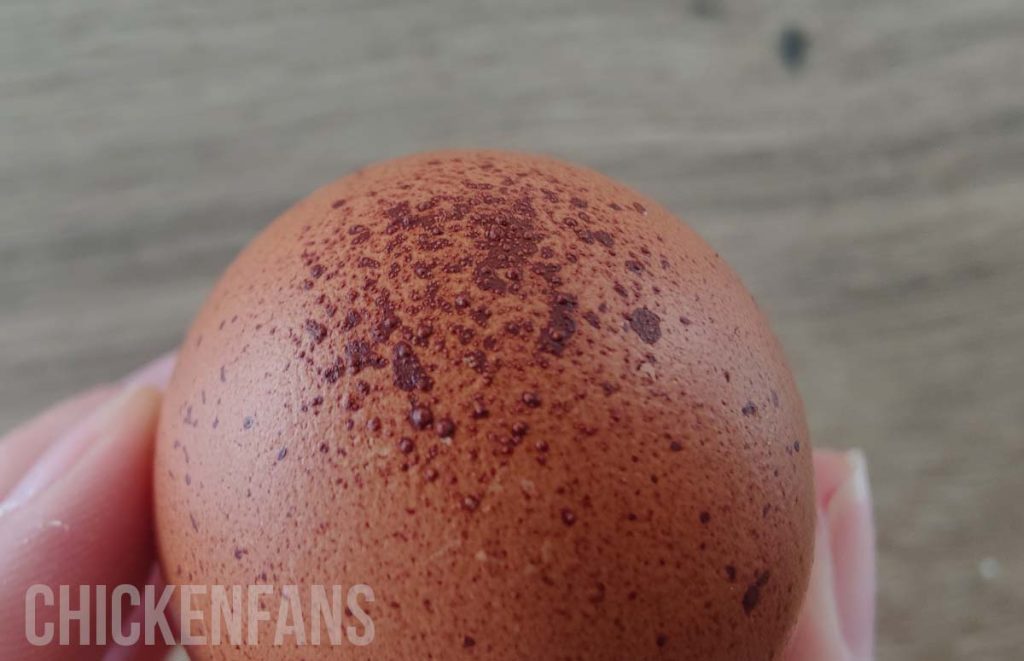
A defective shell gland and disturbances during the calcification process are the two major causes of egg calcium deposits. Thunderstorms, predators, and bullying are just some disturbances that can disrupt the calcification process.
Excess calcium in the hens’ diet can also cause this issue. However, it’s not as common a reason as the previous two.
Can I Eat Eggs With Calcium Deposits?
These eggs are perfectly safe to consume. The extra calcium deposits on the surface do nothing to impact the deliciousness or quality of the egg.
Speckled Eggs
Don’t confuse this with the speckled eggs that some chicken breeds lay. Those are speckled by nature, while the ones you will learn today are not.
These speckled eggs are similar to the previous issue about calcium deposits on eggs. The only difference is that the calcium deposits form just before the cuticle, which is the last layer of the egg.
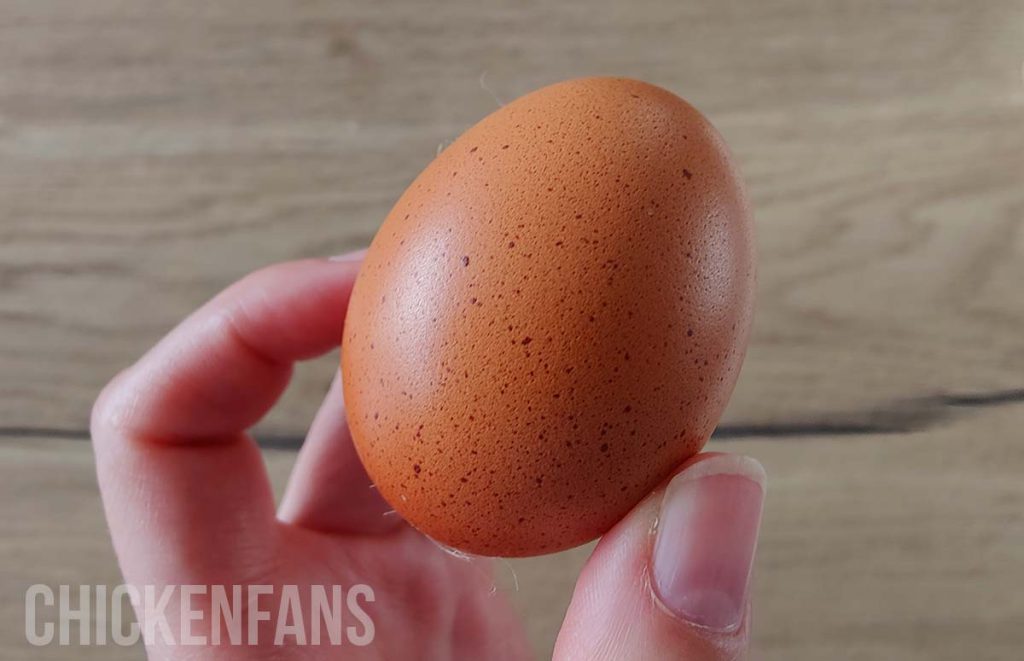
Instead of creating uneven masses of calcium on the egg’s surface, it creates a speckled appearance. Similar to the previous issue, the two major culprits are a defective shell gland and disturbances during the calcification process.
Can I Eat Speckled Eggs?
Speckled eggs are edible. You will still get all the nutrients and wonderful flavors of the egg, as usual.
Slab-Sided Eggs
This happens when a second egg enters the shell gland pouch and contacts the first egg that has yet to leave. Because the second egg is still in the middle of calcification, it’s not yet strong enough to withstand the impact. As a result, the second egg will have a flat side where it collides with the first egg.
Stress, changes in lighting, overcrowding, and diseases are the primary causes of this issue. Even the slightest change can significantly affect the quality of the eggs.
Can I Eat Slab-Sided Eggs?
These eggs are perfectly edible, although avoid the ones with cracks on the surface.
Cracked Eggs
Simply put, cracked eggs are those with fractures on the surface, small holes, and hairline cracks that can grow bigger over time. This occurs more often in older hens, but under certain conditions, younger hens can also lay cracked eggs.
Lack of calcium, vitamin D deficiency, heat stress, and the presence of mycotoxins all result in cracked eggs. Inadequate bedding material in their nesting boxes can also result in cracked eggs.
Can I Eat Cracked Chicken Eggs?
Avoid eating cracked eggs. A crack on the surface invites bacteria and other foreign substances to enter the egg and ruin it.
Corrugated Eggs
If the eggs have a rough or corrugated exterior, then there are several factors at play that you need to look out for. Poor nutrition, softened water, mycotoxins, and heat stress are just some of the reasons why this issue crops up.
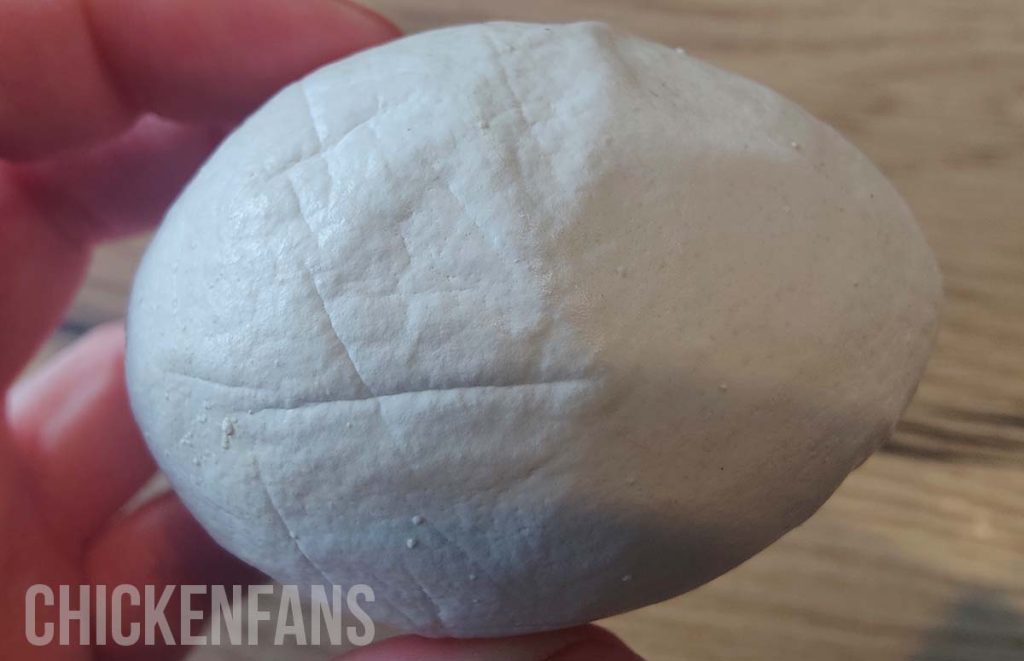
Corrugated eggs happen during plumping, pumping nutrient-rich fluids through the egg membrane and into the albumen. This helps give the egg its final shape before covering it up with the shell. Old age and external factors can cause the plumping process to halt prematurely, resulting in the corrugated surface of the eggs.
Feeding your hens moldy feed can cause corrugated eggs. The same is true when giving them softened water, as these usually contain lime, resin, and various other foreign substances that can alter the egg’s surface.
Can I Eat Corrugated Eggs?
Despite the wrinkled surface, these eggs are safe to eat. As long as there are no cracks on the surface, you need not worry about getting sick when consuming one.
Mottled Eggs
Overcrowded houses with high humidity usually produce plenty of mottled eggs. If you have trouble identifying these eggs, try bringing an egg close to a light source. From there, you could see whether or not the egg is solid or has multiple spots decorating the entirety of its surface.
Mycotoxins and diseases are the other usual suspects when it comes to this, as is a manganese deficiency in the hens’ diet.
Can I Eat Mottled Eggs?
Thankfully, this abnormality doesn’t affect the egg’s quality in any way, shape, or form. And as a result, these eggs are entirely safe to eat.
Dirty Eggs
It’s normal for an egg to get dirty during the collection process, especially when it’s off-schedule. However, this can also indicate that the hens’ have wet, pasty droppings due to poor gut health.
To avoid this, you need to feed them a quality feed that contains all the necessary nutrients. In addition, it’s also a good idea to keep their nesting boxes clean to avoid any dirty eggs in the future. Don’t let them sleep inside the nesting boxes; they will get dirty.
Even though you can technically wash the dirt off the egg before cooking to make it safe and edible, we don’t recommend doing this. There is NO need to wash fresh eggs before storing them, even if they are dirty.
On the contrary, it won’t reduce the risk of bacteria contamination or salmonella infection. It is beneficial, however, to wash dirty eggs right before eating them.
Blood-Stained Eggs
Blood stains on egg shells typically occur in younger hens that start laying for the first time. Additionally, overweight younger hens are likely to produce blood-stained eggs.
Poor hygiene is another common factor when it comes to blood-stained eggs. Vent pecking is the usual result of poor hygiene and will lead to blood stains on freshly laid eggs.
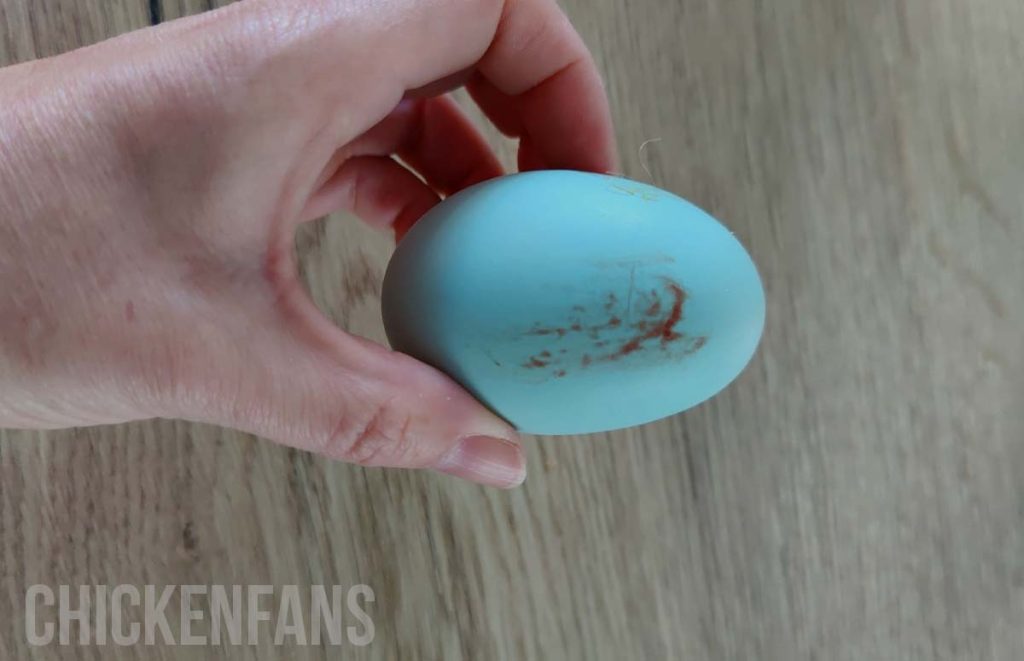
You can wash the blood away from the eggs and cook them normally for consumption. However, many view these eggs as unhygienic, so businesses will not sell them to consumers.
Are Abnormally Shaped Eggs Safe To Eat?
Yes, most are perfectly safe to eat, despite how weird-looking some are. These eggs are usually more elongated than average and have an obvious bulbous end, lumpy appearance, or extremely pointed end.
The common reason why these eggs come in these shapes is due to overcrowding. Those supplying eggs to a large consumer market will often come across several misshapen eggs. And because plenty of businesses value uniformity, these eggs usually never reach the grocery store.
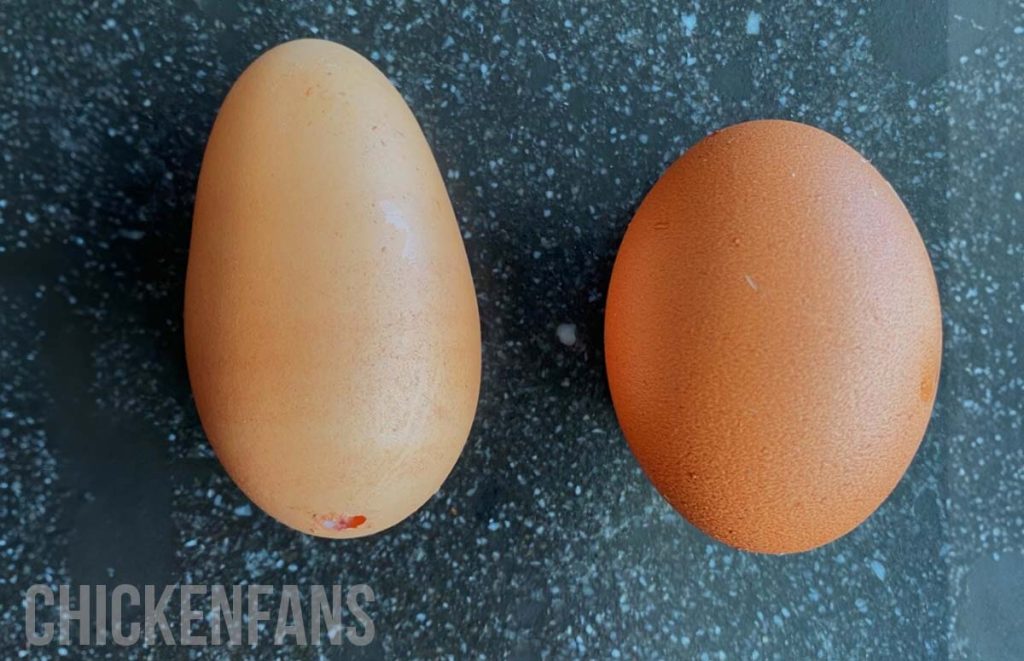
But besides their weird shapes, these eggs are edible and taste the same as any other regular egg you can buy from your local supermarket. As long as you know that the eggs are coming from a place where all the chickens are healthy and fed with all the proper nutrients, then there’s nothing to worry about when consuming these eggs.
Summary
When it comes to chicken egg abnormalities, you can easily prevent them by providing your hens with the right amount of space and nutrition. By doing so, you can eliminate most chicken egg abnormalities.
On top of that, the occasional abnormality or two is not a cause for concern. However, if the same issue happens over a few days to a week, seek a veterinarian’s help to identify whether or not your hens are suffering from some illness.
If you want to learn more about raising chickens or common health issues, please visit our ‘Raising Chickens‘ and ‘Health‘ pages.



